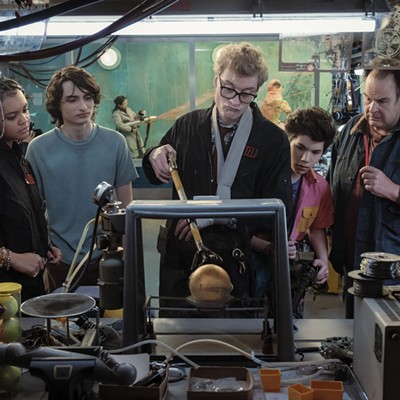
Film review
Kaylee Brewster
Three out of four
“Ad Astra” is a hard movie to describe.
The best way is to say what it’s not.
It’s not a horror space film where the character goes into space and finds an evil creature. Although there are elements of horror.
It’s not a space exploration adventure in which characters travel to the unknown in search of answers. Although, there is a quest involved.
It is not a space mission in which characters must destroy a dangerous object in order to save Earth. Although, they do have to save Earth.
It is not a love story or a story about a father and son. Although, both relationships are a key factor in the plot.
I suppose that means that “Ad Astra” is a look at all those things, but through a philosophical and psychological lens. That means it’s slow and, in some ways, abstract in its narrative. It’s certainly not everyone’s cup of tea, and staying tuned in is not the easiest.
However, “Ad Astra” is pure cinematic poetry.
It follows the story of Roy McBride (Brad Pitt), an astronaut in the “near future” who is on a mission when a power surge occurs. He survives, most of his crew does not.
These power surges are happening all over Earth and causing death and chaos. Roy is called in to help and discovers the source is the Lima Project, a mission to Neptune led by his father, Clifford McBride (Tommy Lee Jones), to find intelligent life.
He was told his father died. Now he’s told his father could be alive and could be connected to the power surges. Roy is asked to use his personal connection to help save Earth, but what he doesn’t know is if that also includes saving his father.
Pitt takes on a role like no other with Roy. Roy is single-minded, focused and abandons all relationships for the sake of the mission. He always keeps his cool. But that starts to fall apart with the revelation that his father is alive, and he begins to question everything.
Pitt is perfection in his portrayal of the cool-headed Roy and in moments when his mind starts to fray.
“Ad Astra” also is a visual and auditory experience. The cinematography is stunning as the camera moves to mimic weightlessness and the spinning and shaking of space travel. Lighting employs different tones and shades for various locations. The moon has dark gray and shadowed blue-gray hues. Mars is redm with a sepia tone to it. The shadows and light play a huge symbolic role in the inner conflict characters are facing.
Also, the use of sound is limited so when it is used, it’s to great effect. Most of the dialogue is done through communication devices. The conversations have a radio-like quality that brings the audience into the spaceship. Other sounds occur in the vacuum of space and are experienced only through Roy’s perspective, muted through his helmet.
“Ad Astra” is a marvel. It shines in storytelling techniques, cinematography, sound and acting (expect “Ad Astra” to get more than a few nominations in these categories come Oscar season). The only real downside is it has too much abstraction. The slow pace and focus on the psychological might not be what some moviegoers want or expect from a Brad Pitt space movie. If audiences are willing to slow down and check out something different, there is beauty to behold here.
https://www.youtube.com/watch?v=vK6Syms-X3w



























